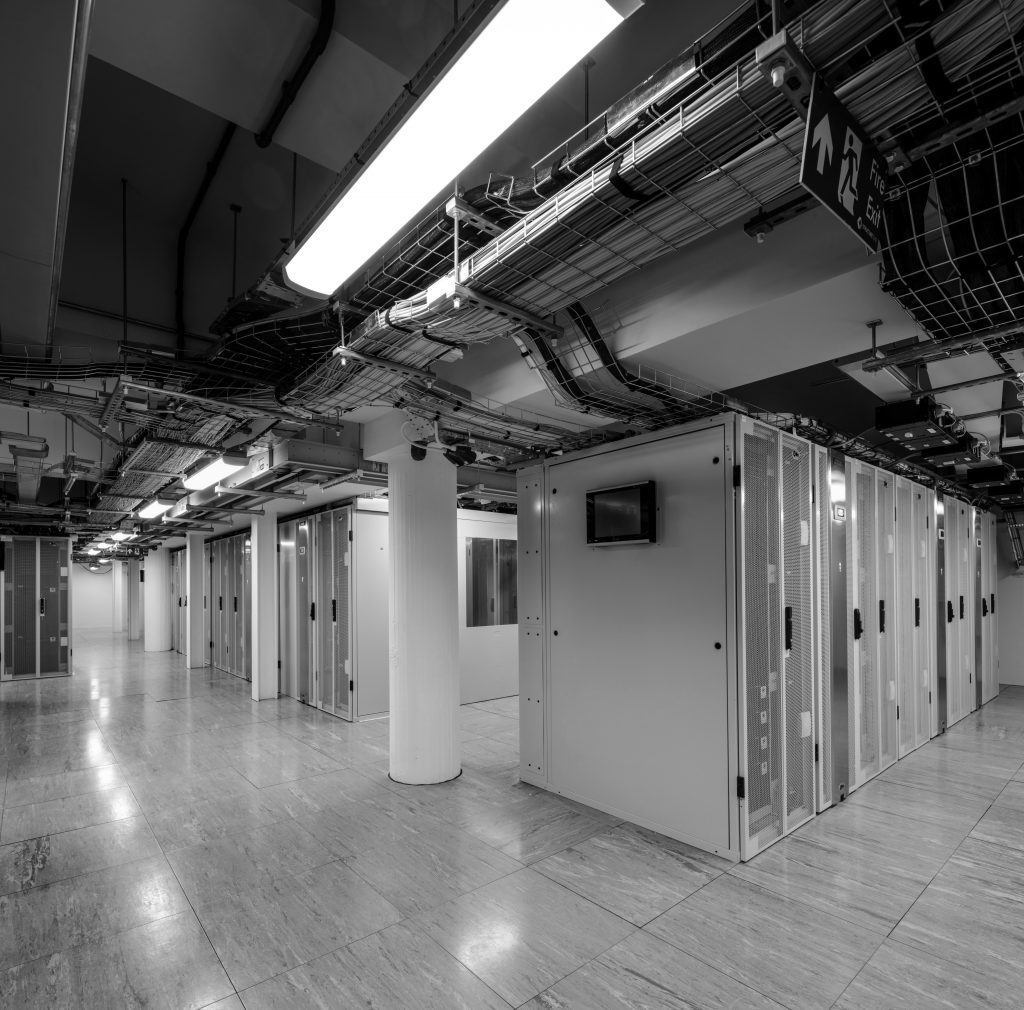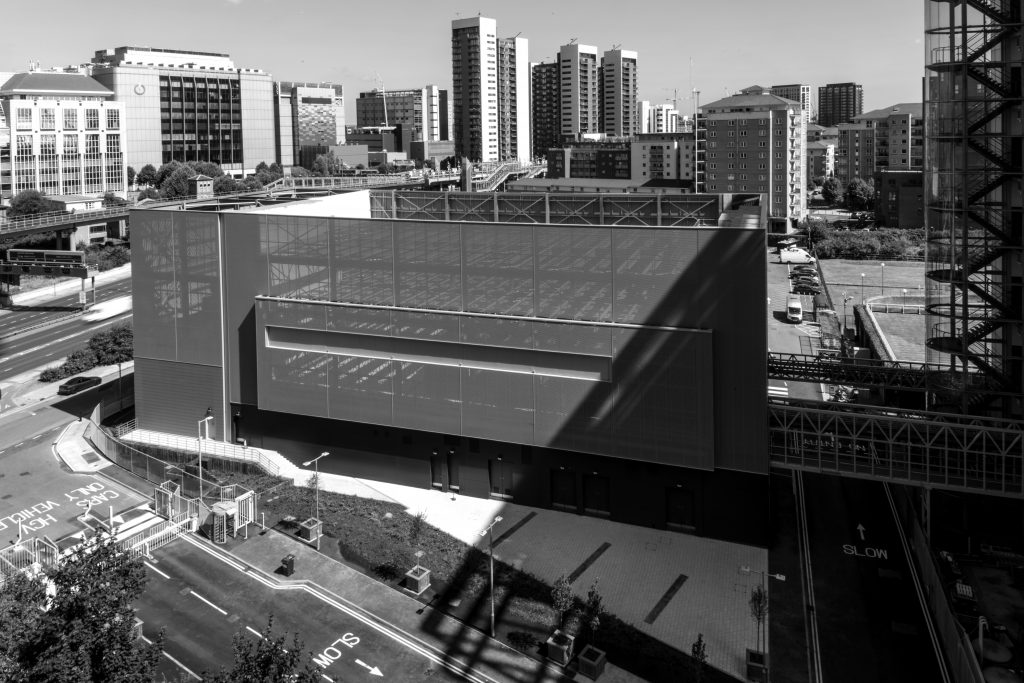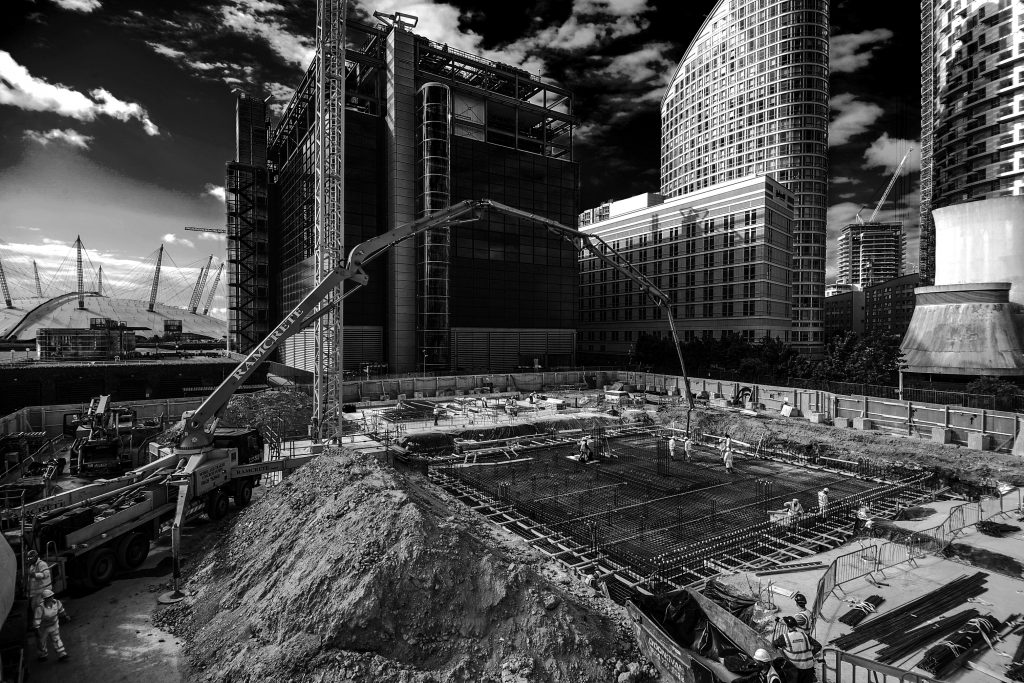LESS is more…
Richard Brandon, Director of Mission Critical at Structure Tone International, looks at the merits of Design & Build procurement for data centre projects and why clients should design less to get more.
Clients who are considering new data centre or critical engineering projects have a variety of procurement routes to choose from. However in recent years, the majority of data centre projects which we tender and negotiate at Structure Tone are Design & Build (D&B). D&B is currently the preference of many clients, although we find that this approach is often not exercised to its full potential. Too often, the real merits are either not fully understood or adopted.
 Go to https://stobuildinggroup.com/wp-content/uploads/2017/11/GSS-03_mono.jpgVolta Data Centre
Go to https://stobuildinggroup.com/wp-content/uploads/2017/11/GSS-03_mono.jpgVolta Data Centre
[Click to view projectGo to https://stobuildinggroup.com/volta-london/]
D&B procurement can bring significant added value to a scheme if it is used in the intended manner, and an experienced data centre main contractor has extensive value to bring to the scheme beyond the core client expectations of a fixed price and a programme.
At a basic level, D&B is about both the ownership and transference of risk and there are many factors which influence this. The key element to derive true D&B benefits lies in clients knowing what they are actually asking the contractor to bring to the table. It’s about knowing when to put the design pencils down but not at the risk of clients losing control of their schemes.
Often the client’s team will have prepared a very mature and detailed set of Employer’s Requirements which allows very little scope for the contractor to develop the design through Contractor’s Proposals (CPs), bring innovation, inform build-ability, offer alternative solutions, propose value engineering and drive programme and cost savings.
 Go to https://stobuildinggroup.com/wp-content/uploads/2017/11/UCL-ARCH-10_BW.jpgSubterranean Central London University HPC Data Centre
Go to https://stobuildinggroup.com/wp-content/uploads/2017/11/UCL-ARCH-10_BW.jpgSubterranean Central London University HPC Data Centre
Some clients perceive the only value of D&B contracting is to move project risk without being rewarded with any of the upsides and benefits. Tendering a data centre scheme at RIBA Stage 4 under a D&B procurement route is a somewhat fruitless exercise the client often looks to transfer the risk of everything that has been designed up to tender stage onto the contractor, but allows the contractor no scope to bring any value to the client. At this stage the only elements of design left on the scheme will typically be the smaller, highly specialised sub-contract and supplier design items ordinarily expected on every large project. In retaining too much control over the maturity of the design, the client ends up losing out.
Indeed, those clients who pay design fees but choose to retain the services of their team and insist that the contractor verifies the design with their own designers end up paying for the design twice which perhaps isn’t readily apparent to many, and is an unnecessary addition to the overall project budget. It is also not uncommon for clients to be told (or to believe) their data centre design is more developed than it actually is, which presents further challenges and complications to the scheme.
 Go to https://stobuildinggroup.com/wp-content/uploads/2017/11/TD-157a_BW.jpgThe Dock – External Utilities Building
Go to https://stobuildinggroup.com/wp-content/uploads/2017/11/TD-157a_BW.jpgThe Dock – External Utilities Building
[Click to view projectGo to https://stobuildinggroup.com/the-dock-confidential-media-company-uk/]
In our view, to get the best from D&B procurement, clients should design less to get more. Taking a data centre design to RIBA Stage 2 or 3 with a good set of Employer’s Requirements and unambiguous expectations around further design development will really bring benefits to the scheme. This is where a firm like Structure Tone can bring significant value to this procurement route. It makes complete sense that the contractor who will be responsible for the construction, installation and commissioning should have input into the design and the design development.
Essentially, we should turn the clock back two decades when organisations recognised that taking their design too far just stifled the process and didn’t give them the outcome they were expecting. Generally, there is little value in a client paying for a detailed design if the contractor can do the same job more efficiently and with a more practical outcome.
At Structure Tone Mission Critical we have many examples of how we have brought value to clients’ projects with this approach. Price and programme are always key, but there is so much more value to bring. Taking responsibility for developing the design from an earlier stage allows input and upsides around design development, engineering alternative solutions, enhanced build-ability, earlier exploration of value engineering and assessing the implications of the MEP design on commissioning and ultimately on the maintenance and operations after handover.
It should also be noted that under the JCT D&B contract, clients actually have the obligation to review and approve the contractor’s designs and CPs, so they still retain input and control of the design.
 Go to https://stobuildinggroup.com/wp-content/uploads/2017/11/Dock-21_BW.jpgThe Dock – External Utilities Building
Go to https://stobuildinggroup.com/wp-content/uploads/2017/11/Dock-21_BW.jpgThe Dock – External Utilities Building
From a design development perspective, we typically either work with the client’s novated design team or we bring our own data centre designers on board. We work with some of the leading practices in Europe whose pedigree in the Mission Critical market is as strong as ours. We have dedicated, in-house design managers and BIM coordinators who work with both the designers and our specialist operational teams to ensure the design is fully managed and coordinated.
Procured in the right manner, the benefits of D&B include:
- Cost certainty–the fixed price for the project is obtained before the design is fully complete
- The client has engagement with the contractor and their supply chain early in the design process, which informs a more buildable and practical construction and engineering solution
- The client can novate their design team across for seamless design continuity and reduce the overall design costs based on very transparent design liabilities
- Construction can commence earlier, compressing the overall project period
- The client only has one fixed point of delivery responsibility for everything–the contractor
- The contractor can bring tangible benefits to areas including; innovation, value engineering and build-ability
- Importantly clients dictate the areas of the scheme where design development and contractor input are important to them
At Structure Tone we have extensive D&B experience of data centres and Mission Critical projects, and we have built some of London’s largest facilities. With a large, dedicated and diverse Mission Critical group totally focused on data centre design and construction, we are very well positioned to inject real value and delivery excellence into your data centre scheme.
Richard Brandon is Director of Mission Critical at Structure Tone International.
This article first appeared in the Green Data Centre Supplement of the autumn edition of Data Centre Management, released in October 2017.